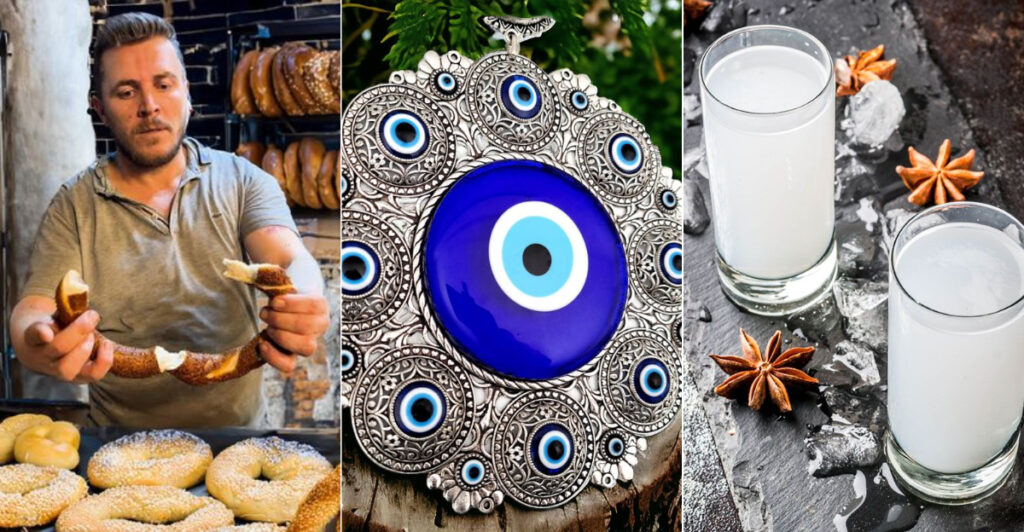Turkey sits where Europe meets Asia, creating a fascinating blend of cultures that surprises American visitors at every turn. From ancient temples older than Stonehenge to modern customs that defy Western expectations, this country challenges everything you thought you knew about Mediterranean life. Most Americans arrive expecting familiar tourist experiences but discover a nation full of delightful contradictions that make every day an adventure.
1. Santa Claus Was Born in Turkey
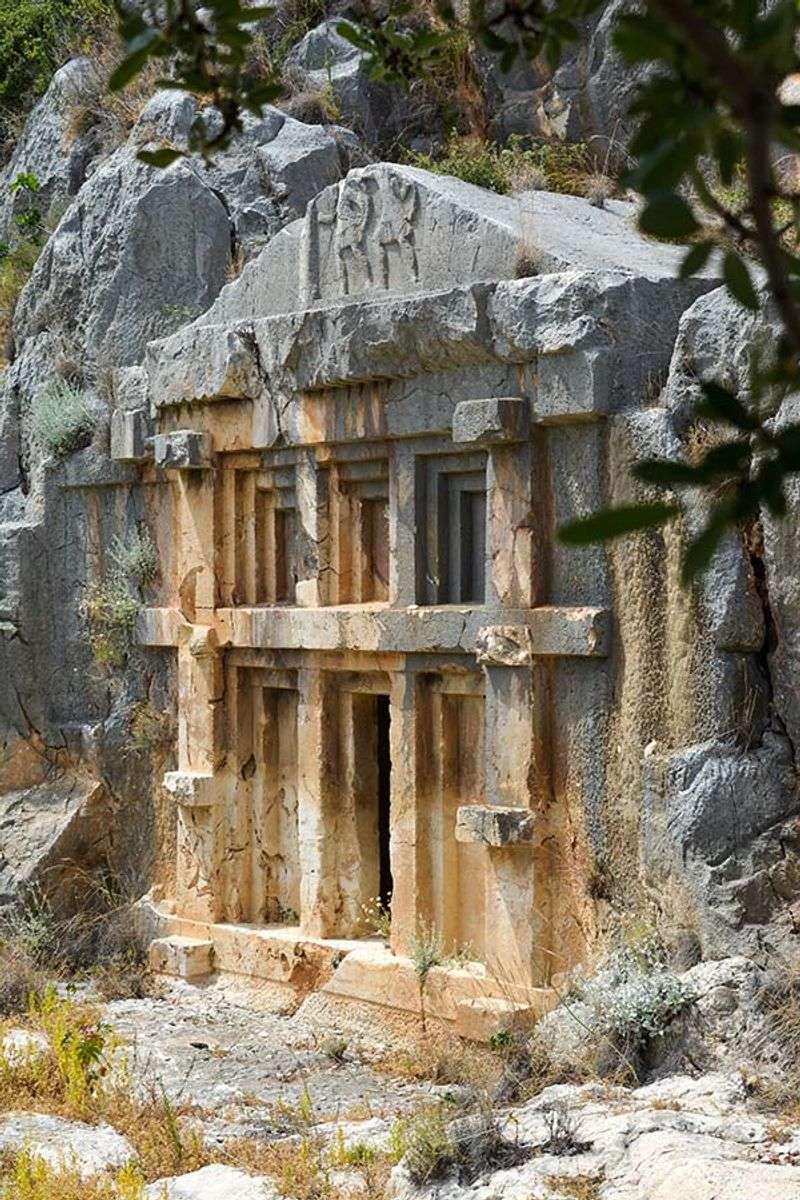
Christmas magic has Turkish roots that most Americans never knew existed. St. Nicholas, the real inspiration behind Santa Claus, was born in Patara around 280 AD and later became bishop of Myra, both cities located in modern-day Turkey.
His legendary generosity included secretly dropping gold coins down chimneys for poor families. The tradition of gift-giving during winter celebrations stems directly from his charitable acts along the Mediterranean coast.
Today, visitors can explore the ancient ruins of Myra and see the original church where St. Nicholas served his community for decades.
2. Turks Drink Tea Like Water
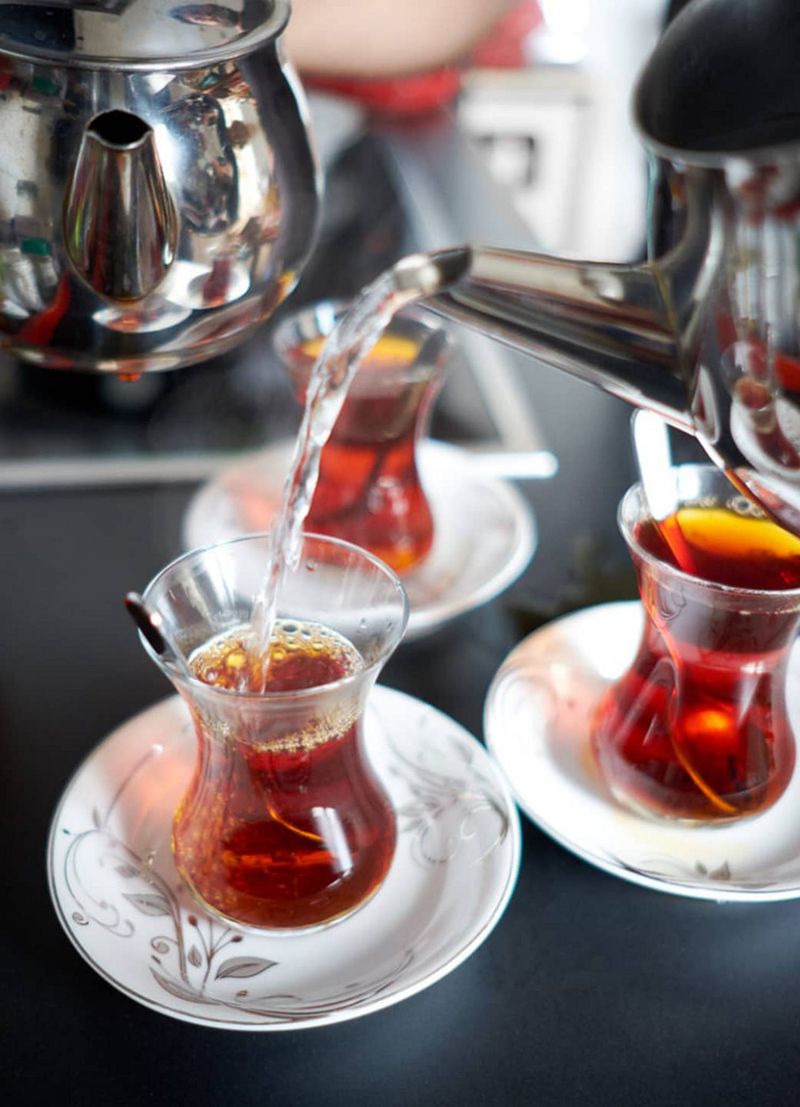
Forget coffee culture – Turkey runs on tea consumed at mind-boggling quantities. The average Turkish person drinks 1,300 cups annually, making them the world’s biggest tea consumers per capita.
Those distinctive tulip-shaped glasses appear everywhere from office meetings to car dealerships. Business negotiations pause for tea service, and refusing a cup can seem rude to hosts.
The tea ritual involves multiple daily breaks called ‘çay saati’ where work stops completely. Americans often struggle to keep up with the constant offerings throughout their Turkish adventures.
3. Istanbul is the Only City on Two Continents
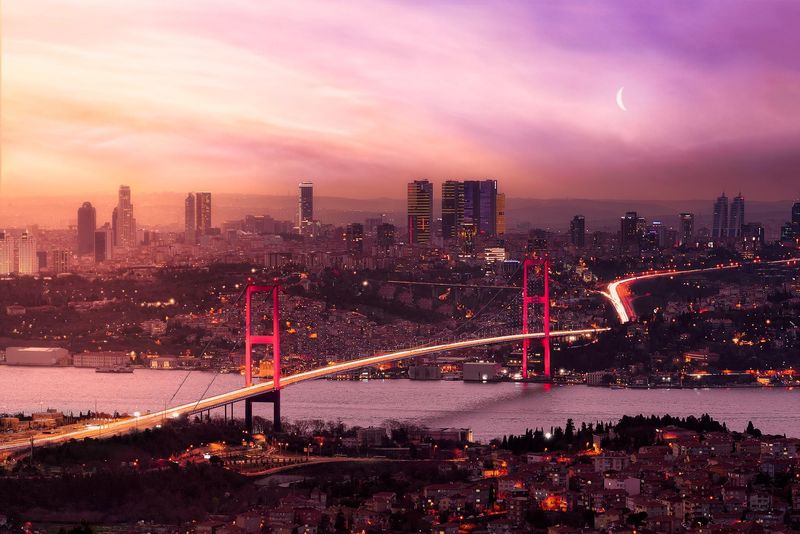
Geography gets wild in Istanbul where you can literally walk from Europe to Asia in minutes. The Bosphorus Strait splits this massive city, creating the world’s only transcontinental urban experience.
Crossing the famous bridges feels like time travel between civilizations. European districts showcase Byzantine architecture while Asian neighborhoods pulse with Ottoman influences and modern Turkish life.
Commuters regularly travel between continents for work, making intercontinental daily routines completely normal. This unique positioning has shaped Istanbul’s role as a cultural bridge for over 2,500 years of recorded history.
4. Hagia Sophia Has Been a Church, Mosque, and Museum
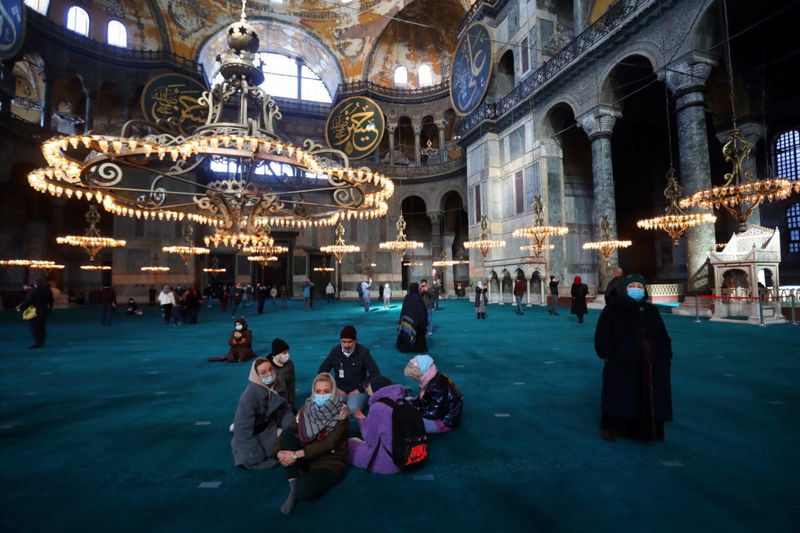
Architectural identity crisis defines Hagia Sophia’s incredible 1,500-year journey through history. Built as a Christian cathedral in 537 AD, it became a mosque after Ottoman conquest, then a museum under modern Turkey.
Since 2020, it functions as a working mosque again while preserving Christian mosaics and Islamic calligraphy side by side. This religious transformation reflects Turkey’s complex cultural evolution through different empires and governments.
Visitors witness layers of faith literally painted over each other on ancient walls. The building stands as a living timeline of religious and political change.
5. Turks Really Love Their Bread
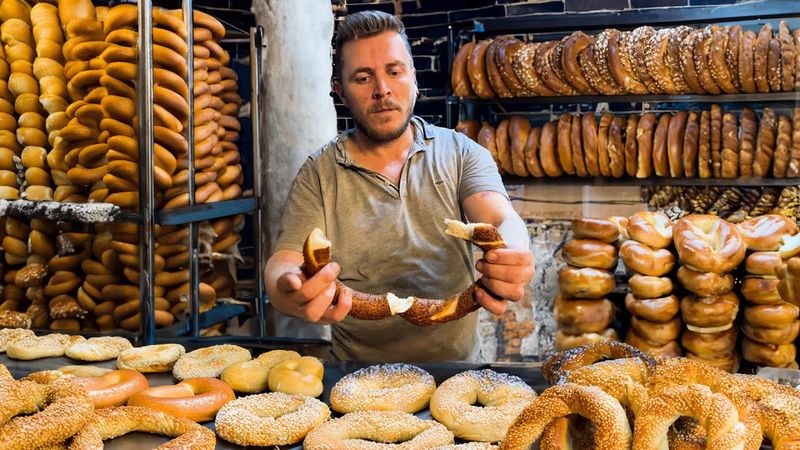
Bread holds sacred status that goes far beyond typical American reverence for carbohydrates. Turkish families treat every loaf with religious respect, never allowing bread to touch the ground or be thrown away carelessly.
Stale bread gets placed on high walls, tree branches, or designated areas for birds rather than tossed in garbage. This practice stems from Islamic teachings about not wasting food, especially bread.
Bakeries operate like community centers where neighbors gather daily for fresh loaves. The aroma of warm bread fills Turkish streets every morning, creating an sensory experience that defines neighborhood life.
6. The World’s Oldest Temple is in Turkey
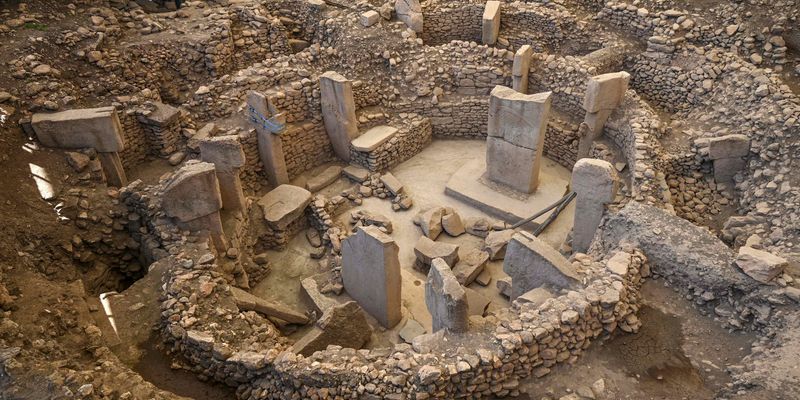
Göbekli Tepe shatters everything archaeologists thought they knew about ancient civilization timelines. This 12,000-year-old temple complex predates Stonehenge by 6,000 years and the Egyptian pyramids by 7,000 years.
Hunter-gatherer societies built these massive stone circles before agriculture even existed. The sophisticated carvings and astronomical alignments suggest advanced knowledge that challenges traditional theories about prehistoric human capabilities.
Recent excavations reveal only five percent has been uncovered so far. Each new discovery pushes back the timeline of human architectural achievement and religious organization by thousands of years.
7. Turkish Coffee is Meant to Tell Your Future
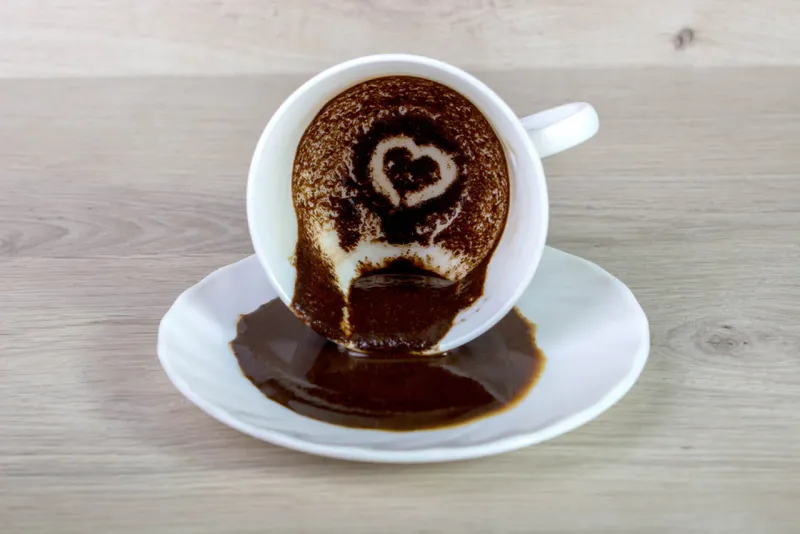
Coffee grounds become crystal balls in Turkish fortune-telling traditions that fascinate American visitors. After finishing the thick, unfiltered coffee, the cup gets swirled and flipped upside down on the saucer.
Remaining grounds create patterns that trained readers interpret as glimpses into your future. Love, money, travel, and family predictions emerge from the dried coffee residue stuck to porcelain surfaces.
This practice called ‘tasseography’ accompanies social gatherings and special occasions. Many Turks take the readings seriously while others enjoy the entertainment value of coffee-ground prophecies shared among friends.
8. There’s a 2,000-Year-Old Library in Ephesus
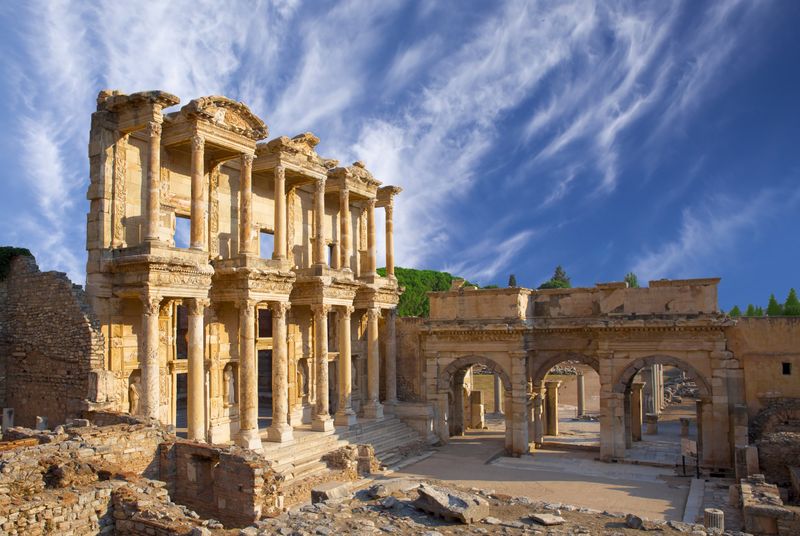
Ancient knowledge storage reaches impressive heights at the Library of Celsus, one of the largest libraries in the ancient world. Built around 135 AD, this architectural marvel housed over 12,000 scrolls in its prime.
Secret tunnels allegedly connected the library to nearby brothels, though historians debate whether these passages served scholarly or scandalous purposes. The building’s facade still showcases intricate marble work and statues representing wisdom and knowledge.
Modern visitors can walk through the same entrance where Roman scholars once gathered. The preservation quality allows detailed examination of ancient architectural techniques and decorative elements.
9. Turks Don’t Use Toothpaste for Morning Breath

Morning routines take unexpected turns with mastic gum replacing typical toothpaste rituals. This natural resin from Aegean mastic trees provides antibacterial properties that freshen breath while promoting digestive health.
Chewing mastic has been practiced for over 2,500 years throughout the Mediterranean region. The slightly pine-flavored gum helps clean teeth naturally while stimulating saliva production that neutralizes harmful mouth bacteria.
Many Turkish families prefer this traditional approach over commercial dental products. Health-conscious Americans often discover mastic gum benefits during their visits and bring supplies home for continued use.
10. The Ottoman Empire Invented the Lion’s Milk Nickname for Raki
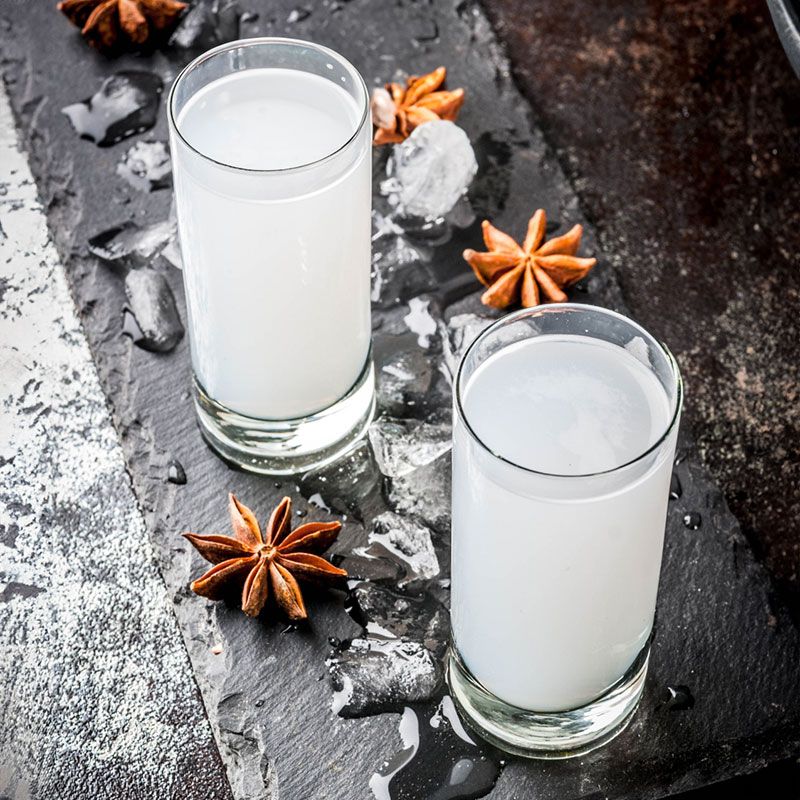
National drink mythology centers around raki’s dramatic transformation when mixed with water. The clear anise-flavored liquor turns cloudy white, earning the poetic nickname ‘lion’s milk’ from Ottoman-era drinkers.
This color change comes from anise oils that become visible when diluted, creating an almost magical visual effect. Raki consumption follows strict social protocols including specific toasting rituals and accompanying meze dishes.
The drink represents Turkish hospitality and friendship traditions. Business deals, family celebrations, and casual evenings often revolve around shared raki sessions that can last for hours with continuous conversation and small plates.
11. Cappadocia’s Fairy Chimneys Were Homes
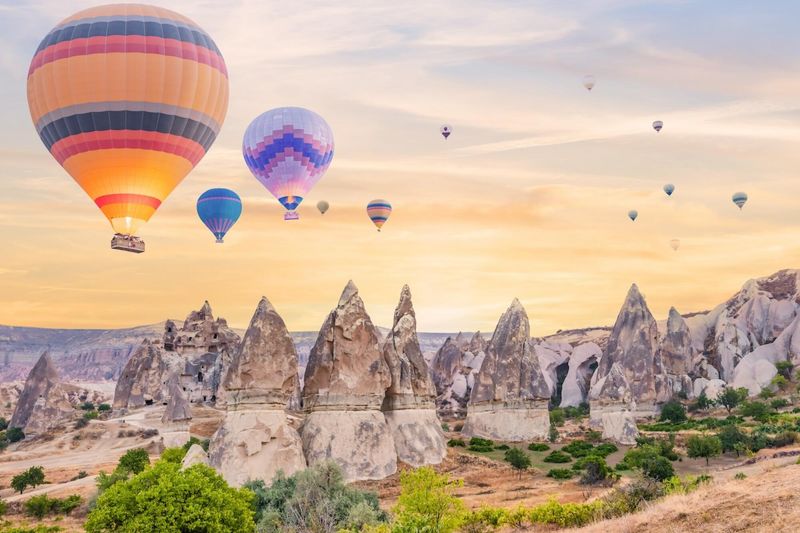
Volcanic rock formations called fairy chimneys housed entire communities for centuries in Cappadocia’s otherworldly landscape. Soft volcanic tuff allowed residents to carve elaborate multi-room homes directly into the cone-shaped rocks.
Underground cities connected these surface dwellings, creating vast networks that sheltered up to 20,000 people during invasions. Some families still live in modernized cave homes with electricity and running water added to ancient stone chambers.
Hot air balloon rides reveal the extent of this troglodyte civilization from above. The unique geological conditions created by ancient volcanic activity made this architectural approach both practical and defensible.
12. Turks Never Cut Birthday Cakes with a Knife
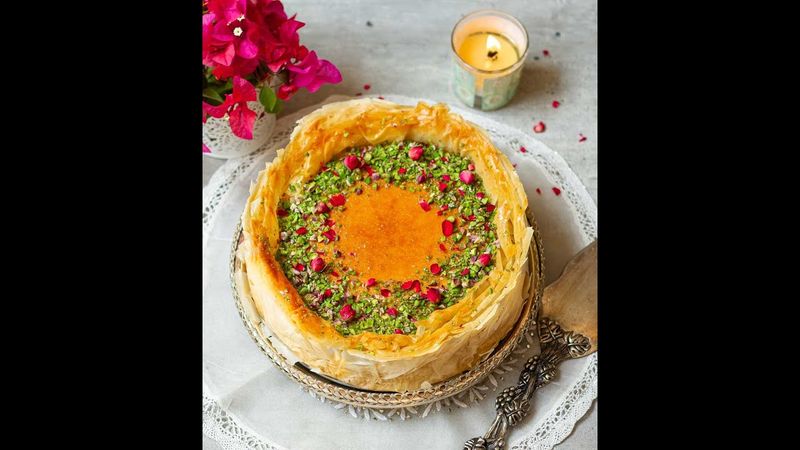
Birthday celebrations avoid sharp objects through superstitious traditions that puzzle American visitors. Using knives to cut birthday cakes brings bad luck according to Turkish folklore, so alternative cutting methods become necessary.
The birthday person must use a spoon, their hands, or specially designated cake servers to divide the dessert. This practice supposedly prevents cutting away good fortune or shortening the celebrant’s lifespan.
Families take this tradition seriously during milestone birthdays and children’s parties. The ritual adds extra meaning to cake-cutting ceremonies while creating memorable moments that differ significantly from Western birthday customs.
13. The Evil Eye is Everywhere
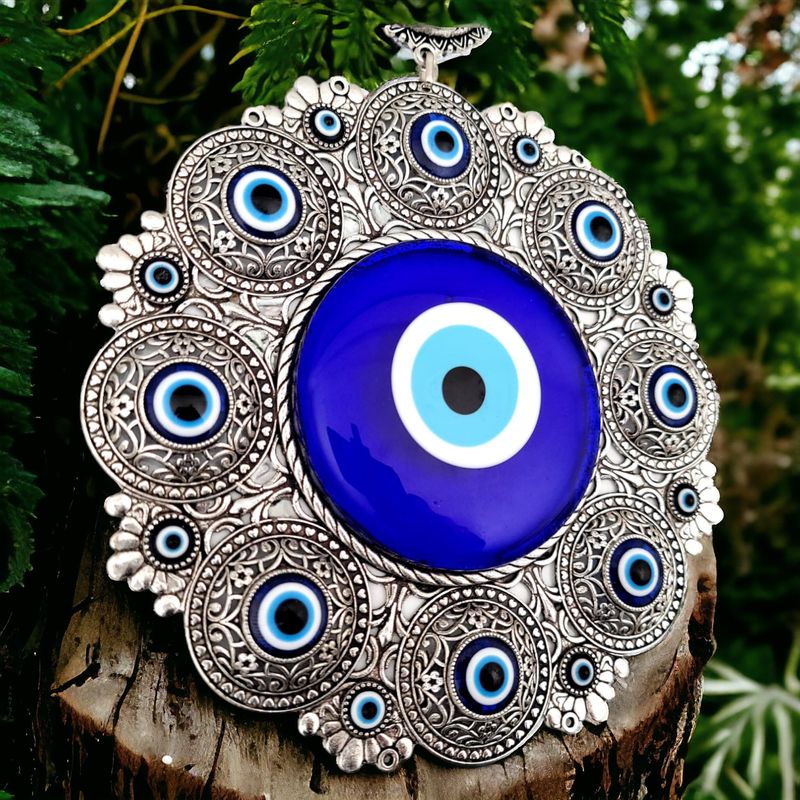
Blue glass protection appears on everything from newborn babies to luxury cars throughout Turkey. The Nazar Boncuğu, or evil eye amulet, wards off negative energy and jealous looks according to widespread Turkish beliefs.
These distinctive blue and white glass charms hang in homes, offices, shops, and vehicles as spiritual insurance policies. When an evil eye cracks or breaks, people believe it successfully absorbed harmful intentions directed at them.
Gift shops sell thousands of variations while families pass down antique versions through generations. The tradition combines Islamic, Christian, and ancient Anatolian protective practices into modern daily life.
14. Turkish Breakfast is a Feast
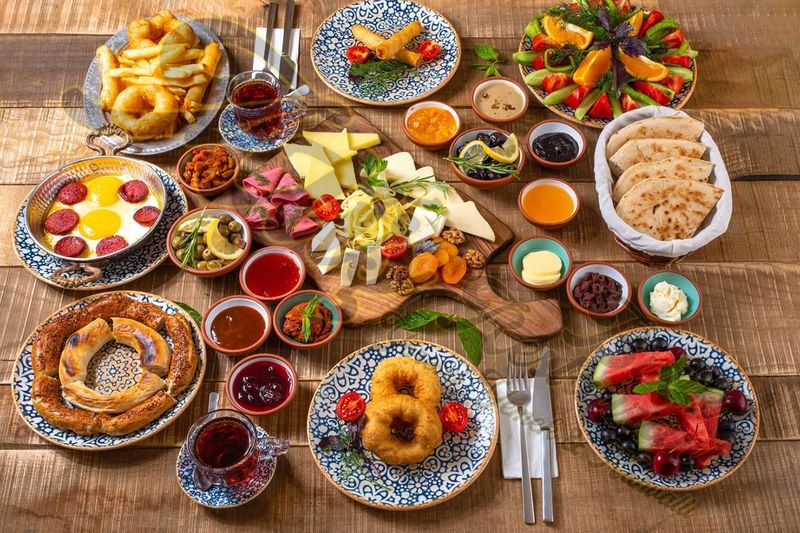
Morning meals transform into elaborate social events that last for hours rather than rushed caffeine-and-go routines. Turkish breakfast spreads include olives, multiple cheeses, jams, honey, eggs, tomatoes, cucumbers, and endless tea refills.
Families gather around tables laden with small plates called ‘meze’ that encourage slow eating and conversation. Fresh bread accompanies every item while preserves made from local fruits add sweetness to the savory selection.
Hotels serve breakfast buffets that overwhelm American visitors accustomed to simple continental options. The meal philosophy emphasizes community bonding over nutritional efficiency, making breakfast the day’s most important social gathering.
15. The Grand Bazaar Has 64 Streets

Shopping becomes an adventure through history at Istanbul’s 550-year-old Grand Bazaar, one of the world’s oldest covered markets. This massive complex contains 4,000 shops spread across 64 streets under a single roof system.
Getting lost among the maze-like passages is practically guaranteed for first-time visitors. Merchants sell everything from hand-woven carpets to exotic spices while maintaining family businesses passed down through multiple generations.
The architectural structure includes small mosques, fountains, and restaurants within the shopping complex. Bargaining skills become essential as fixed prices rarely exist in this traditional marketplace that operates much like it did centuries ago.
16. There’s a No-Fly Zone Over Istanbul
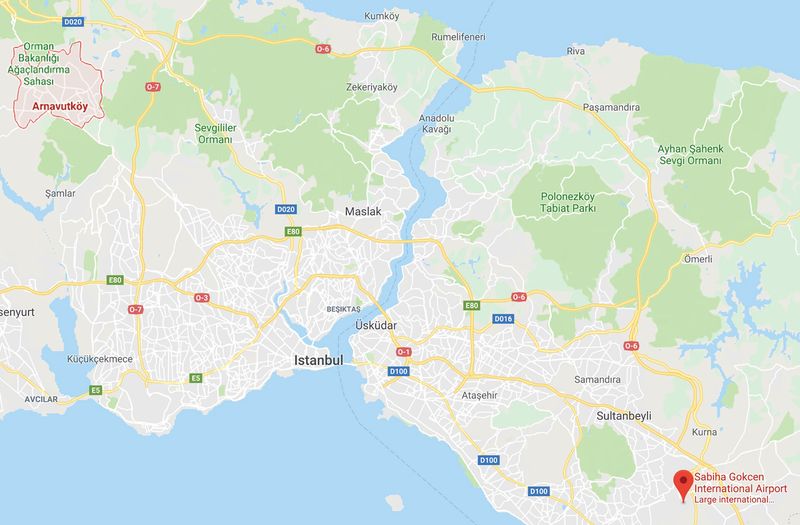
Military airspace restrictions force commercial flights to take lengthy detours around Istanbul due to its strategic geographic position. The Bosphorus Strait’s importance as a shipping lane between Europe and Asia creates security concerns for Turkish authorities.
Pilots must navigate complex flight paths that add significant time to routes connecting European and Middle Eastern destinations. These restrictions stem from Cold War era policies that remain in effect today.
Aviation enthusiasts notice the unusual approach patterns when flying into Istanbul’s airports. The detours provide passengers with unique aerial views of the city from unexpected angles while maintaining national security protocols.
17. Turks Celebrate Two New Years
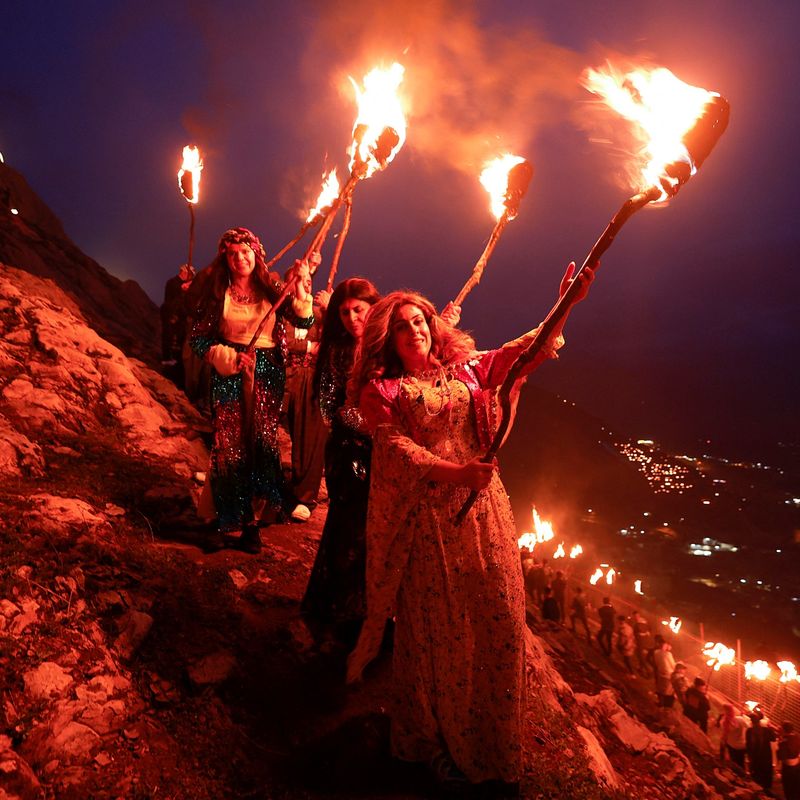
Calendar confusion creates double celebration opportunities as Turkey observes both January 1st and Nowruz, the Persian New Year in March. This dual tradition reflects the country’s diverse cultural heritage spanning multiple civilizations.
Nowruz celebrations include jumping over bonfires, preparing special foods, and welcoming spring’s arrival with ancient rituals. The March celebration predates the January holiday by thousands of years throughout Central Asian cultures.
Families often prefer the traditional spring celebration while participating in modern January festivities for international compatibility. The dual system allows Turks to honor both their ancient roots and contemporary global connections through separate holiday traditions.
18. The Döner Kebab Was Born in Berlin
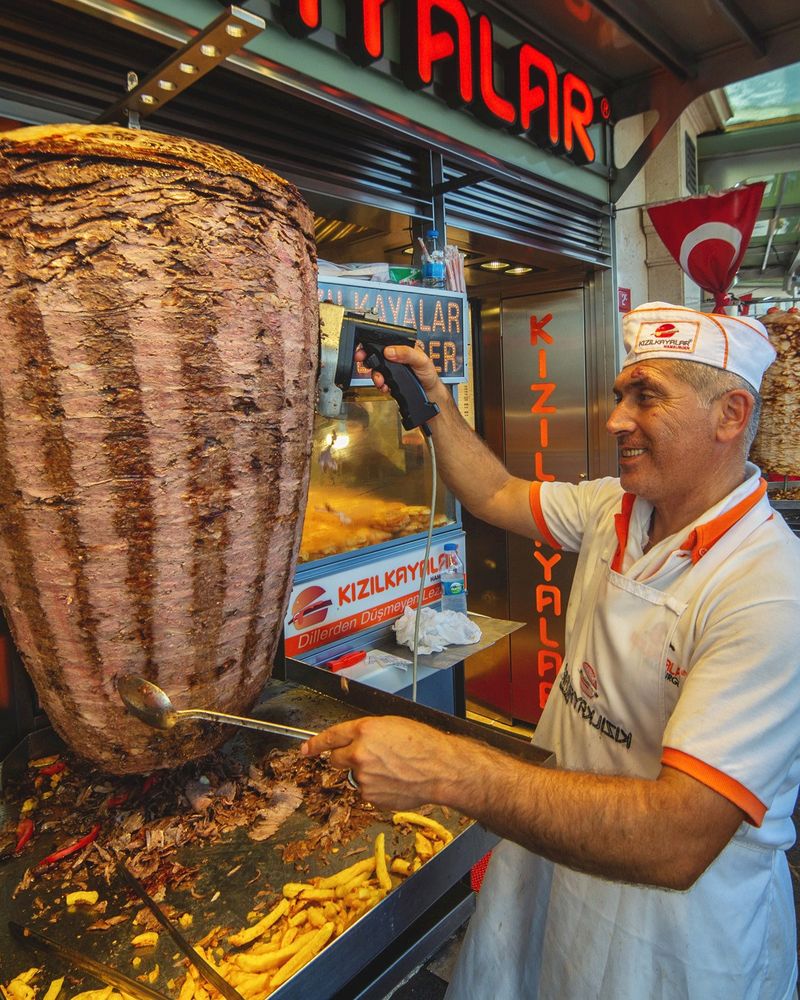
Culinary innovation happened far from home when Turkish immigrant Kadir Nurman created the modern döner kebab in Berlin during 1972. Though inspired by traditional Turkish cooking methods, the vertical rotisserie street food format emerged in Germany.
The portable sandwich version developed to serve German workers who needed quick, filling meals during lunch breaks. Traditional Turkish döner involved different serving styles and accompaniments than the German-influenced version.
This fusion creation spread globally from Berlin rather than Istanbul, creating confusion about the dish’s true origins. Many Turks acknowledge the German contribution while maintaining pride in the underlying cooking techniques and flavors.
19. Atatürk Abolished the Arabic Alphabet Overnight
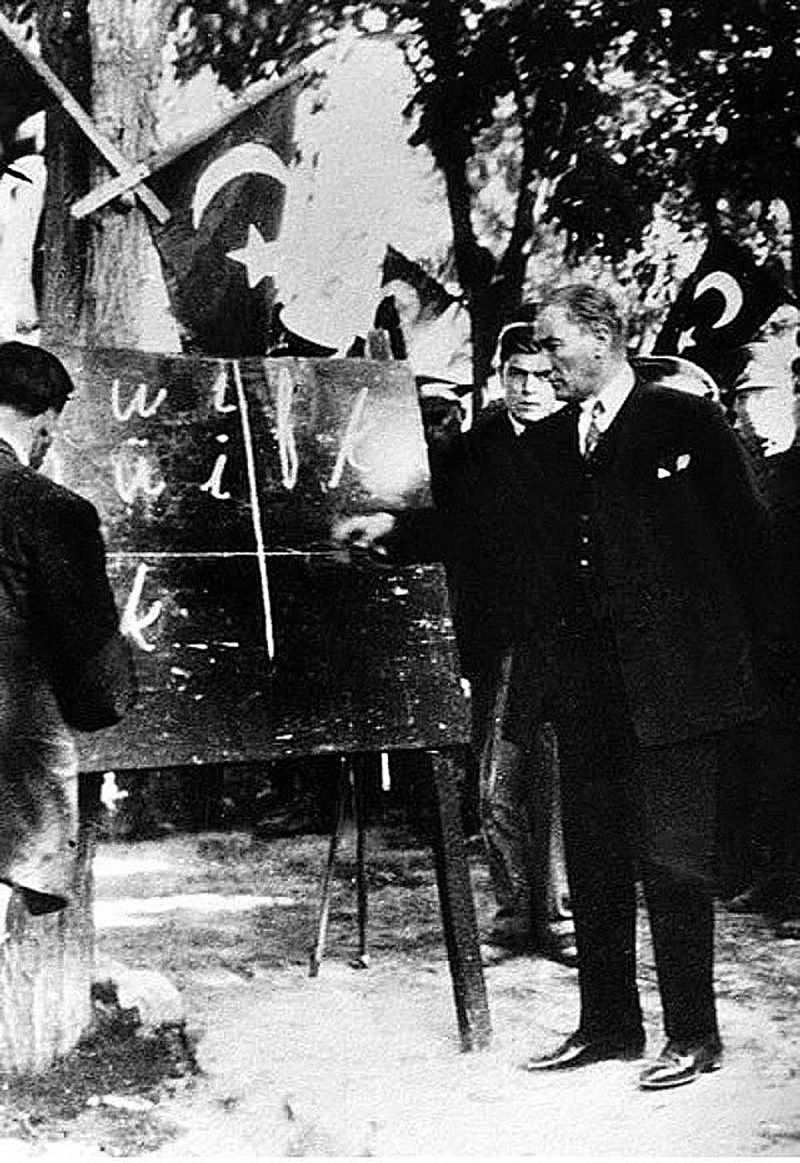
Revolutionary language reform transformed an entire nation’s literacy in 1928 when Mustafa Kemal Atatürk mandated switching from Arabic script to Latin alphabet. This massive educational undertaking happened within just a few months across Turkey.
The change aimed to increase literacy rates and connect Turkey more closely with Western European culture. Older generations suddenly couldn’t read new publications while younger people learned completely different writing systems.
Atatürk personally traveled the country teaching the new alphabet to demonstrate its importance. This dramatic transformation created a generational divide in written communication that lasted for decades throughout Turkish society.

